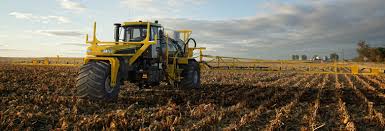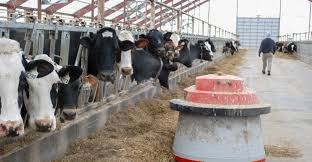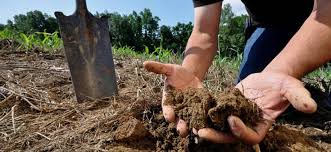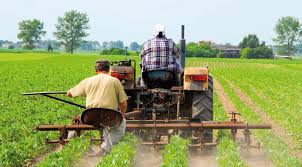Farm maintenance techniques are essential practices that ensure the sustainability and efficiency of agricultural operations. These techniques encompass a variety of activities aimed at preserving the health of farm infrastructure, equipment, and crops, ultimately leading to increased productivity and profitability.
Effective farm maintenance is vital not only for maximizing resources but also for reducing downtime and maintaining a healthy farming environment.
One key area of farm maintenance is equipment maintenance, which involves routine inspections, repairs, and servicing of machinery such as tractors and harvesters.
Regular upkeep is crucial to prevent breakdowns that can lead to significant productivity losses and increased operational costs. Ensuring that equipment operates smoothly helps farmers stay on schedule during critical planting and harvesting periods.
Another critical component of farm maintenance is soil health management. Proper techniques, such as regular soil testing, crop rotation, and the application of organic matter, help maintain soil fertility and structure.
Healthy soil supports robust crop growth, improves water retention, and minimizes erosion. Sustainable practices, like reducing reliance on chemical fertilizers and pesticides, not only enhance soil health but also contribute to environmental conservation.
Crop maintenance techniques are vital for ensuring a productive harvest. Farmers must implement practices such as timely planting, pest and disease management, irrigation, and fertilization.
Integrated pest management (IPM) strategies allow farmers to control pests effectively while minimizing harm to beneficial organisms and the environment. Regular crop monitoring for signs of stress or disease enables timely intervention, safeguarding investments and ensuring healthy yields.
Building upkeep is another important aspect of farm maintenance, encompassing the maintenance and repair of structures like barns, silos, and greenhouses.
Regular inspections and maintenance of these facilities help prevent costly repairs and ensure a safe working environment for farm workers. Proper ventilation, insulation, and sanitation in animal housing facilities contribute to animal welfare and productivity, which are essential for livestock operations.
In addition to these practical techniques, adopting a proactive mindset toward farm maintenance is crucial. Farmers should develop a comprehensive maintenance schedule that includes routine inspections and record-keeping to ensure all aspects of their operations are functioning optimally.
Utilizing modern technology, such as farm management software and equipment monitoring systems, can enhance maintenance efforts by providing real-time data and alerts for necessary actions.
Farm maintenance techniques play a vital role in the success and sustainability of agricultural operations. By prioritizing equipment, land, crop, and building maintenance, farmers can optimize productivity, reduce costs, and promote environmental stewardship.
As agriculture faces increasing challenges from climate change, market fluctuations, and resource scarcity, effective farm maintenance becomes even more critical for ensuring food security and the resilience of farming communities.
Importance of Regular Farm Maintenance

.
1. Increases Productivity: Well-maintained equipment, healthy crops, and proper irrigation systems lead to better farm yields.
2. Reduces Costs: Regularly servicing machinery and equipment prevents expensive breakdowns and reduces the need for major repairs.
3. Ensures Safety: Properly maintained livestock facilities, fences, and tools help reduce the risk of accidents and injuries to both animals and farm workers.
4. Prolongs Equipment Lifespan: By maintaining farm tools and machinery, you can extend their operational lifespan, saving money in the long term.
5. Supports Environmental Sustainability: Efficient irrigation systems and careful management of soil and resources help prevent wastage, pollution, and environmental degradation.
Equipment Maintenance and Repair
Farm equipment is a significant investment, so keeping it in good working condition is vital.
1. Regular Cleaning: After every use, clean off dirt, mud, and debris from tractors, plows, and other machinery to prevent rust and damage.
2. Lubrication: Regularly oil and grease machinery parts like gears and hinges to keep them functioning smoothly and avoid unnecessary wear.
3. Inspection and Repairs: Periodically inspect equipment for signs of wear, cracks, or loose parts. Repair or replace parts before they cause equipment breakdown.
4. Storage: Store machinery in dry, covered areas to protect them from weather elements like rain and sunlight that can degrade their condition.
5. Follow Manufacturer’s Guidelines: Adhere to the maintenance schedule and guidelines provided by the manufacturer for optimal performance and longer equipment lifespan.
Irrigation System Maintenance
Proper irrigation ensures that crops receive the right amount of water at the right time.
1. Regular Inspection: Check irrigation pipes, sprinklers, and drip systems regularly for blockages, leaks, or damage.
2. Cleaning Filters: Clean the filters of irrigation systems periodically to prevent clogging and ensure smooth water flow.
3. Monitor Water Pressure: Ensure the system is operating at the correct water pressure to avoid damaging crops or wasting water.
4. Winterizing Systems: In colder climates, drain water from irrigation systems before winter to prevent pipes from freezing and bursting.
5. Calibration: Regularly calibrate irrigation systems to provide the proper water distribution needed for each crop.
Read Also: Tangerine and Mandarin Pith: Economic Importance, Uses and By-Products
Livestock Facility Upkeep

Livestock facilities, such as barns, pens, and fencing, need consistent care to ensure the well-being of animals.
1. Cleanliness: Regularly clean livestock stalls, barns, and pens to prevent disease buildup and ensure a healthy environment.
2. Fencing Maintenance: Inspect and repair fences to prevent livestock from escaping and to keep predators out.
3. Ventilation: Ensure proper ventilation in animal housing to prevent respiratory issues and keep air quality healthy.
4. Bedding Replacement: Regularly replace bedding materials like straw or wood shavings to keep livestock comfortable and reduce the spread of bacteria.
5. Water Supply: Ensure that livestock always have access to fresh, clean water, and regularly check water troughs for cleanliness.
Crop Field Management and Care
Proper management of crop fields is essential for healthy, productive plants.
1. Soil Testing: Regularly test soil to determine nutrient levels and pH, ensuring that plants have the right conditions for growth.
2. Fertilization: Apply fertilizers based on the results of soil testing, ensuring that crops receive the necessary nutrients.
3. Weed Control: Remove weeds that compete with crops for nutrients, water, and sunlight.
4. Pest Management: Implement integrated pest management (IPM) strategies to control pests and diseases that can damage crops.
5. Crop Rotation: Practice crop rotation to maintain soil health and reduce the build-up of pests and diseases.
Best Practices for Farm Maintenance
For effective farm maintenance, it’s important to follow some best practices.
1. Create a Maintenance Schedule: Develop a regular maintenance schedule for all farm equipment, irrigation systems, and livestock facilities.
2. Training: Train all farm workers on the proper use, care, and maintenance of equipment and facilities.
3. Budget for Maintenance: Set aside part of the farm’s budget for ongoing maintenance costs to avoid unexpected expenses.
4. Record Keeping: Keep detailed records of maintenance activities, including repairs, replacements, and servicing.
5. Sustainability: Implement sustainable practices such as using organic fertilizers, water conservation techniques, and energy-efficient equipment to reduce the farm’s environmental impact.
Farm Building and Fence Maintenance
Maintaining farm buildings and fences is essential for protecting livestock, crops, and equipment.
1. Regular Inspections: Check buildings and fences regularly for damage or wear, such as rotting wood or rusted metal.
2. Repairs: Promptly repair any issues, such as fixing holes in fences or replacing broken doors and windows.
3. Painting and Sealing: Apply paint or sealants to wooden structures to protect them from moisture and pests.
4. Drainage: Ensure proper drainage around buildings to prevent water accumulation, which can lead to structural damage.
5. Security Measures: Install locks and security systems to protect buildings and equipment from theft.
Read Also: Tangerine and Mandarin Flowers: Economic Importance, Uses and By-Products
Soil Health and Fertility Management

1. Soil Testing: Conduct regular soil tests to assess nutrient levels, pH, and organic matter content.
2. Organic Matter Addition: Incorporate organic matter, such as compost or manure, to improve soil structure and fertility.
3. Cover Crops: Use cover crops to enhance soil health, prevent erosion, and fix nitrogen levels.
4. Crop Rotation: Rotate crops to improve soil nutrients and break pest cycles.
5. Reduced Tillage: Minimize tillage to protect soil structure and reduce erosion.
Pest and Disease Prevention Strategies
Preventing pests and diseases is vital for maintaining crop health.
1. Regular Monitoring: Inspect crops frequently for signs of pests and diseases.
2. Sanitation Practices: Keep fields and facilities clean to reduce the risk of pest infestations.
3. Biological Controls: Use natural predators or beneficial insects to manage pest populations.
4. Resistant Varieties: Plant disease-resistant crop varieties to reduce vulnerability.
5. Integrated Pest Management (IPM): Implement IPM practices to combine multiple control methods for effective pest management.
Seasonal Maintenance Checklist
Creating a seasonal maintenance checklist helps ensure all tasks are completed timely.
1. Spring: Inspect irrigation systems, prepare soil, and plant crops.
2. Summer: Monitor crops for pests and diseases, and maintain irrigation.
3. Fall: Harvest crops, clean equipment, and prepare fields for winter.
4. Winter: Inspect and repair buildings and fences, and service machinery.
5. Year-Round: Keep records of maintenance tasks, and adjust practices as needed.
Sustainable Farm Maintenance Practices
Implementing sustainable practices supports long-term farm health.
1. Resource Conservation: Use water and energy efficiently to minimize waste.
2. Integrated Practices: Combine crop, livestock, and soil management strategies for holistic care.
3. Local Inputs: Source inputs locally to reduce transportation costs and support the local economy.
4. Biodiversity Promotion: Encourage biodiversity by planting a variety of crops and preserving natural habitats.
5. Education and Training: Stay informed about sustainable practices and train staff on their implementation.
Do you have any questions, suggestions, or contributions? If so, please feel free to use the comment box below to share your thoughts. We also encourage you to kindly share this information with others who might benefit from it. Since we can’t reach everyone at once, we truly appreciate your help in spreading the word. Thank you so much for your support and for sharing!
Read Also: A Comprehensive Guide To Circular Economy Consulting

